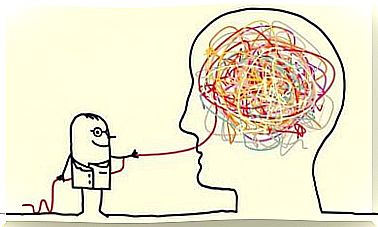Counter-terrorism: The Use Of Metaphors

The fight against terrorism is called counter-terrorism, states and security forces are the main actors in this field. Since terrorism is an ever-evolving phenomenon, counter-terrorism must adapt to new forms to be successful. For this reason, it is a complex phenomenon and extremely difficult to interpret, which is why metaphors are often used to explain it.
Metaphors are rhetorical figures in which a word or phrase represents a different object or idea, evoking a similarity or analogy. Their use serves to understand the most complex phenomena in a simple way.
However, metaphors tend to simplify phenomena and return a false sense of total understanding. Therefore, although they may prove useful to better understand the phenomena they represent, as in the case of counter-terrorism, they tend to leave out other concepts as they are incompatible with the metaphor itself.

Counter-terrorism as a war
This metaphor refers to a war between states where the enemy is a clearly identifiable national entity opposing our nation. The coexistence of both is impossible, one of the two must disappear, an agreement will never be reached. In other words, it is a zero-sum conflict, the victory of one presupposes the defeat of the other. The enemy wants to destroy us, so we must defend ourselves by conquering or destroying its territory.
On the other hand, being in a state of war has implications, such as national unity and mobilization to support the cause. In this sense, critical voices are accused of anti-patriotism or treason. Likewise, going to war also implies values such as solidarity, heroism, courage and sacrifice.
And, of course, God is on our side, so the moral dimension is also evident. Obviously, wars are won and done with military forces, so the head of state must exercise all his power to the point of limiting some freedoms.
The fight against terrorism as an application of the law
Enforcing the law and declaring war are two ways to protect the citizens of a nation. The choice between either option depends on the magnitude of the threat. While war is centered on the enemy, the law is centered on crime. Furthermore, the limits are more defined in this metaphor. It begins when the law is broken and ends when the corresponding sentence is served. Welfare and education policies are some of the most used resources.
The law enforcement metaphor focuses on the culprit and does not tolerate collateral damage such as war. Therefore, the losses are significantly lower. The punishment usually includes prison, so in the event of a judicial error, the damage caused is less than that of a war, which involves killing.
Counter-terrorism as a containment of a social epidemic
The previous metaphors refer to the manifestations of violence, but not to the factors that provoke it. The metaphor of the social epidemic uses the epidemiological triad composed of an external agent, a vulnerable host and an environment that puts them in contact. There is also a vector or transmitter in the environment.
Applying this to terrorism, the agents are the terrorists while the vectors are the channels used to spread the ideology. It would therefore be the environment to promote militancy, as well as conflicts or political repression.
The metaphor of counter-terrorism as a social epidemic also has implications. For example, the existence of immune subjects. Such individuals would be immune to external agents as they possess effective motivations such as psychological strength or social support.
Counter-terrorism will therefore focus on avoiding contagion or, in this case, radical ideology, which would correspond to the pathogen or virus. Another implication is that radicalized individuals can be “cured”.

Counterterrorism as a Prejudice Reduction Strategy
The three previous counter-terrorism metaphors view terrorism as an external problem that requires the need for intervention. However, the metaphor of prejudice reduction takes into account the interaction between two communities whose conflict can generate terrorism. This metaphor represents a group of people with negative attitudes towards another group.
Changing these attitudes, or rather reducing prejudices, would be the ideal strategy to follow. Eradicating misperceptions and building a common identity would represent the objectives of counter-terrorism according to this metaphor, the maximum representation of which is the contact between the members of the different conflicting groups.
In short, metaphors, in addition to simplifying and helping to understand phenomena, have further implications; which is why it is necessary to be cautious in using them to interpret reality.









